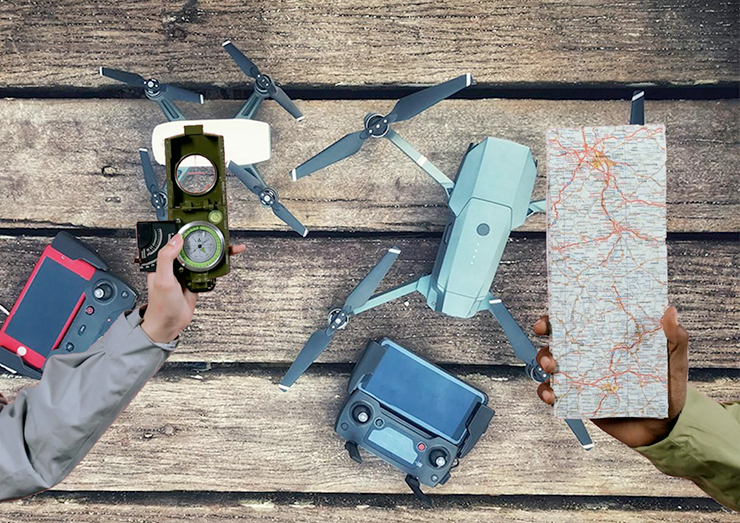
Most people don’t realize just how much work goes into a building project. Every detail needs to be planned out before construction begins to ensure that the project is completed safely and efficiently. A developer may have a plan for the type of structure they will be building for a client, but before they can start any work, detailed surveys of the proposed work site need to be conducted. “Surveying is a cornerstone of the construction industry, vital for the accurate planning and execution of virtually every type of building project,” explains S3DA Design, a California-based Structural & MEP Engineering firm. “This precision field involves the measurement and mapping of our environment using specialized technology and techniques, ensuring that construction projects are executed precisely, safely, and within legal boundaries.”
The firm goes on to explain how surveying has been a part of construction for thousands of years, a process that started off using primitive ropes and markers to engineer critical structures. S3DA, and countless other developers, now have technology like GPS and drones that enable surveys to be completed with the greatest degree of accuracy while simultaneously saving time and money, and keeping surveyors out of harm’s way. On January 7, 2025, Pat VanHaverbeke from Colliers Engineering and Design, and a member of the New York State Association of Professional Land Surveyors, held a demonstration in Albany, NY, on how different drones are used by surveyors.
Colliers Engineering and Design has more than 80 offices throughout the United States. They specialize in engineering, design, and architecture projects for residential, commercial, educational, government, athletics, technology, and more. They rely on drone surveys for nearly all of their projects. “Now, we can send out a crew armed with one of these, and we can fly hundreds of acres in a day,” Mr. VanHaverbeke said. At the demonstration, FAA-licensed drone operators showcased a range of drones, including a drone large enough that requires two people to set it up, a drone that resembles a model airplane, and a small drone that can be flown inside structures.
Each of these drones benefits different aspects of the surveying process, but most importantly, they get the job done in a way that Mr. VanHaverbeke says is making all the difference. “Once you learn how to apply these tools to what we do, it’s a night-and-day difference,” he said. “We can cover more ground, more safely, and be more cost-effective for our clients.” Not only are drones making surveying more efficient, but they are also opening up a multitude of job opportunities. As infrastructure and building projects continue to grow in demand, so will the need for drones.
Mr. VanHaverbeke estimates that surveying requirements will create thousands of new drone-based employment opportunities. Of course, this includes needing individuals who are skilled in surveying and licensed to operate a drone, but it goes far beyond that. The industry will need people who design the hardware and software for drones, drone mechanics, drone policymakers, and even instructors to teach the next generation of anyone and everyone invested in the drone industry.
The realm of employment possibilities is endless when it comes to drones. Not only is there a multitude of opportunities, but as Mr. VanHaverbeke points out, these jobs could be life-changing for many seeking sustainable employment. The starting salary for a skilled and licensed drone operator in land surveying is around $60,000 a year. “This industry has exploded. There is no sign of slowing down,” Mr. VanHaverbeke said. “The technology is getting better, there is new aircraft, new sensors coming out almost on a daily basis.”
As the construction industry continues to evolve with new technologies, the integration of drones into surveying is proving to be a game-changer. Not only do drones enhance the efficiency and accuracy of surveys, but they also create exciting new career opportunities for those willing to embrace this innovative field. With a growing demand for skilled drone operators and a vast array of related professions, the future of surveying—and the industries it supports—looks bright. As technology continues to advance, those involved in this sector will be at the forefront of shaping the next generation of construction practices, ensuring that projects are completed faster, safer, and more cost-effectively than ever before.
|